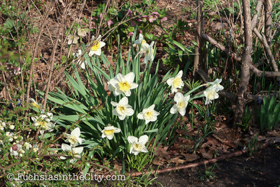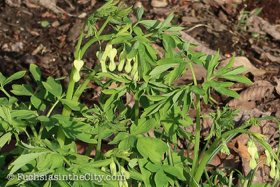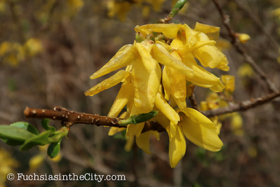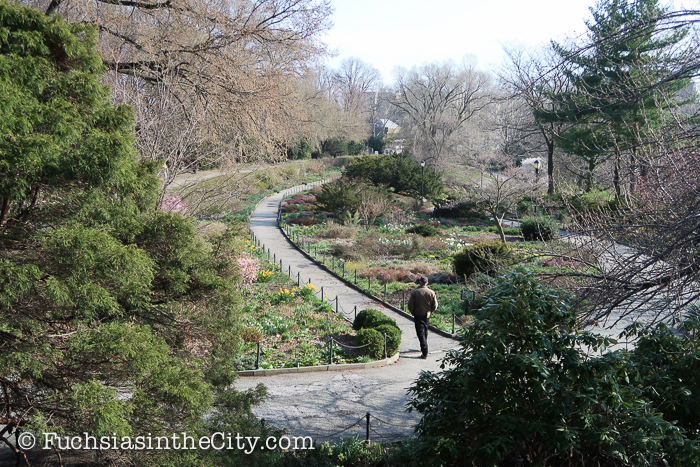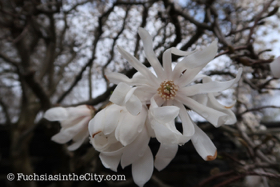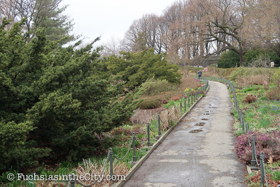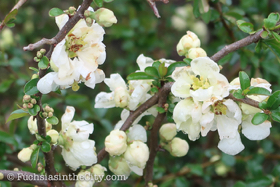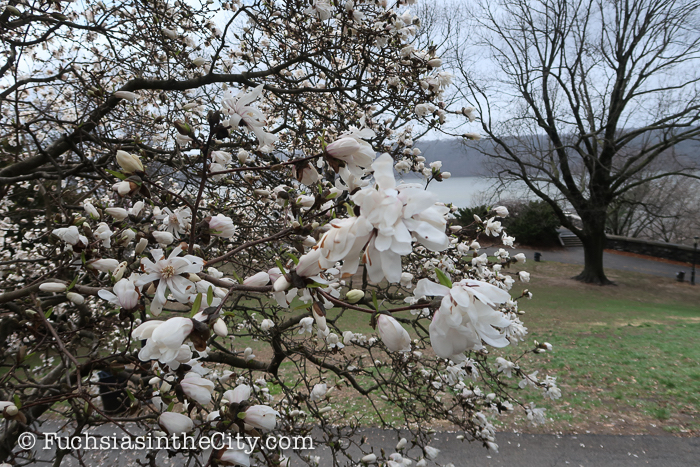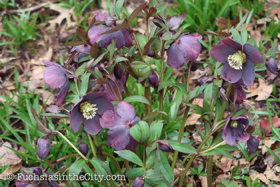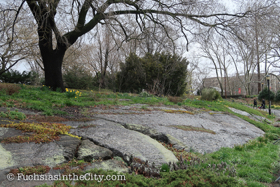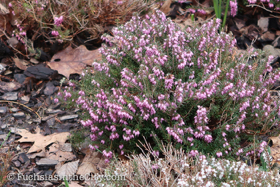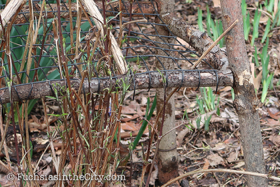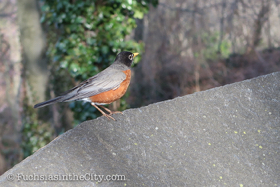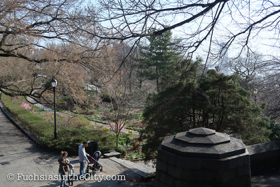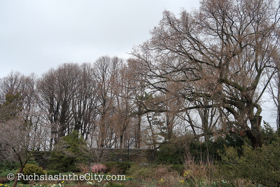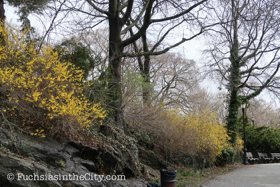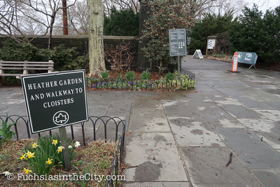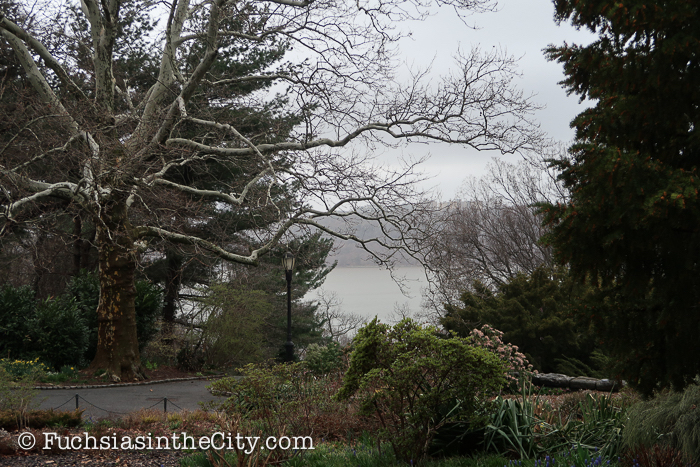The Heather Garden. Fort Tryon Park
Friday, April 20, 2018

During the Revolutionary War, it was known as Mount Washington. The Battle of Fort Washington saw the major defeat of the American Continental Army at what is now Bennett Park, just a little south of Fort Tryon. The British retook the City and renamed the site for William Tryon (1729–1788), who would be the last royal governor of New York. Despite policies described as savage and brutal by both sides in the American conflict, his name stuck.
Margaret Corbin Circle at the beginning of the park, and Margaret Corbin Drive running through it, though, celebrate a defender of northern Manhattan in the battle against the British. Legend has it that when Corbin’s husband John fell dead in the fight, she took over his cannons and was one of the last to keep firing during the battle despite her own wounds. Corbin did became the first woman in America to be granted a military pension.
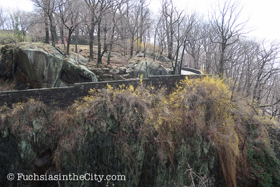
In 1917, John D. Rockefeller, Jr. (1874-1960) bought the estate from Billings and hired Olmsted Brothers to design and develop the property as a park in 1927. Earlier Rockefeller had bought up the land on the New Jersey side of the Hudson—now the Palisades Interstate Park—to preserve stunning views of the Palisades’ cliffs from New York. Tryon Hall burnt down in a spectacular conflagration in 1926 but some remnants of the luxurious estate, such as the gatehouse, some original walls, the entrance arcade, and the driveway, were incorporated into the park’s design. Sic gloria transit.
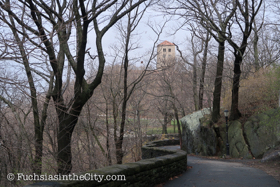
In 1935, Rockefeller magnanimously presented his completed park to the City of New York.
In 1938, The Cloisters, a branch of the Metropolitan Museum of Art dedicated to medieval art, opened at the northern end of the park. Rockefeller had bought advisor and sculptor George Grey Barnard’s collection of medieval architectural works and sculptures to be incorporated into the museum he built in the park designed to resemble a Romanesque monastery.
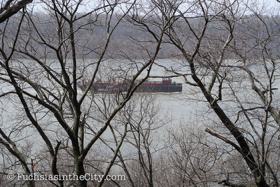
By 1983, however, things were starting to look up for the poor, impoverished park as funding from the City once again started to flow. Guided by Olmstead’s original design of 1935, and starting with the restoration of the Heather Garden at the front, the park was slowly repaired through the work and support of a number of benefactors, such as the Greenacre Foundation. Today, magnificent views of the Palisades along the Hudson River are once again open for all to admire.
As Rockefeller’s far-reaching and immensely generous foresight intended, Fort Tryon Park has returned to being an urban oasis that attracts meanderers to its paths and readers to its benches.
Tag along, then, as I take in some of the spring delights and the priceless river views from the Heather Garden. By the way, that’s the George Washington Bridge in the background. Sweep your eyes to the north along the Palisades and you’ll see all the way to the Tappan Zee!


